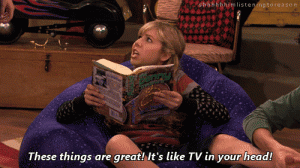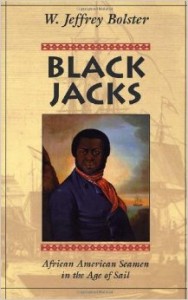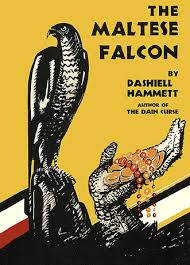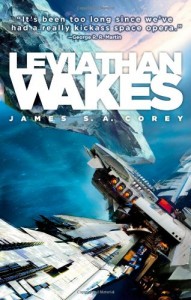 I was considering doing a Top Ten list of books I read in 2014, but then I realized that lists are not how most of us experience reading.
I was considering doing a Top Ten list of books I read in 2014, but then I realized that lists are not how most of us experience reading.
We read things and they interact with other parts of our lives in ways that often run perpendicular to any quality in the writing itself. A list of the “best” books I read in 2014 might not convey as much meaning as telling you about the adventures in reading I had.
So, that’s what I am going to do instead…
ϖ
 First, let me just say to all the writers out there: anything by Brian McDonald. No, let me rephrase. Everything by Brian McDonald.
First, let me just say to all the writers out there: anything by Brian McDonald. No, let me rephrase. Everything by Brian McDonald.
But especially Invisible Ink and Ink Spots. These go to the top of my list of writing advice alongside Les Edgerton‘s Hooked, Blake Snyder‘s Save the Cat!, and Raymond Chandler‘s The Simple Art of Murder.
And, if I tried to explain why McDonald’s advice is so brilliant, you’d probably tell me it sounds obvious. Perhaps it is. But the way McDonald explains it makes it stick. So, read him.
ϖ
Second, I read some great source material this year, fantastic books on history that really brought to life the past in ways often missed in historical fiction.
Thomas Jefferson’s Qur’an: Islam and the Founders by Denise Spellberg
If you liked HBO’s John Adams miniseries or the David McCullough book on which it was based, you’ll thoroughly enjoy Spellberg’s investigation into the interaction Jefferson and Adams had both with the concept of Islám and real-life Muslim diplomats.
There’s also a lot of intriguing information about how the idea of Muslim Americans (considered a distant possibility during the 18th century) informed debates about the nature of democracy, the likely massive numbers of African slaves who were Muslims (including two of George Washington’s slaves who almost certainly were), and the way America’s relationship with Muslim powers affecting the early, maritime stage of our history. Highly recommended for anyone interested in religion, politics, or the history of the modern age.
Black Jacks: African American Seamen in the Age of Sail by W. Jeffrey Bolster
 You might not think of sailors when you think of African-Americans in history, or African-Americans when thinking of sailors in history. But, long before the mid-19th century shift in American culture and commerce from sea to land, the sailor was the quintessential leader of African-American society, a status role later taken up by the more familiar black minister.
You might not think of sailors when you think of African-Americans in history, or African-Americans when thinking of sailors in history. But, long before the mid-19th century shift in American culture and commerce from sea to land, the sailor was the quintessential leader of African-American society, a status role later taken up by the more familiar black minister.
Bolster’s surprising book will show you how little you know of African-American history and society if you think primarily of the land-bound plantation setting and—when you do think of the sea—of Africans as cargo rather than professional ship’s men. Moreover, there is a particularly intriguing chapter on the lives of American sailors in Dartmoor prison during the War of 1812 that would make a fascinating television drama. I bought the memoir of Dartmoor prisoner Charles Andrews to get more insight, and I might do an Elevator Pitch piece on it.
But, beyond revealing the critical maritime foundation of African-American history that gets obscured by the the overwhelming popular focus on plantation slavery, Black Jacks illustrates the day-to-day life of sailors in general better than most books on the subject. In this way, it presents a deck sailor’s perspective to balance the officer’s view in The Autobiography of a Seaman by Admiral Lord Cochrane.
Black Jacks would be prominently featured in the bookstore of the National Museum of Sail, and the excellence of Bolster’s book inspires me to put together a book list for that Elevator Pitch project.
The Female Shipwright by Mary Lacy
 This autobiography written in 1773 by a British woman named Mary Lacy (with whom I share the birthday of 12 January) who ran away from home as a teen dressed as a boy in order to work in the navy. Under the name William Chandler, she eventually apprenticed as a shipwright and was later granted a pension by the admiralty, under her true name, due to rheumatism. She was quite likely the first woman to have taken the exam for shipwright.
This autobiography written in 1773 by a British woman named Mary Lacy (with whom I share the birthday of 12 January) who ran away from home as a teen dressed as a boy in order to work in the navy. Under the name William Chandler, she eventually apprenticed as a shipwright and was later granted a pension by the admiralty, under her true name, due to rheumatism. She was quite likely the first woman to have taken the exam for shipwright.
Refreshingly free of the facile, hostile, and academically insulated gender theory of recent decades, Mary has plenty of criticism for both sexes even while she carefully applies caveats (“there are good and bad of both sexes” she reminds us) to avoid the sexist generalizations that typify so much of our motivated discussion on gender today.
Disappointingly, the introduction by Margarette Lincoln in the copy I read fell into that motivated mode of discussion, imposing a factually incorrect narrative on Mary’s account to boost the transgressive tone of her story. For example, Lincoln implies that Mary may have been covering up lesbian tendency with her cross-dressing and her swiftly concluded marriage to a “Mr. Slade” at the end of the memoir, which Lincoln suggest may have been a disguise for a relationship with an Elizabeth Slade whom Mary was later known to live with.
There’s certainly nothing in Mary’s account to eliminate the possibility that she was a lesbian, and there certainly was a European tradition of women living together romantically (called a “Boston marriage” in America) but, unfortunately for Lincoln’s motivated analysis, records of Slade’s marriage to shipwright Josias Slade have been found, as have records of births and burials proving they had at least six children, most of whom died in infancy. Elizabeth Slade was most likely a relative of Mary’s husband, after whom Mary and Josias named a daughter, and not Mary’s secret lover.
Her story is nevertheless quite striking, even beyond the simmering intrigue of her deceit and its eventual unraveling. Like Black Jacks and Cochrane’s Autobiography, Mary’s memoir presents details of everyday comings and goings that bring the past to life: the naïve joys of youth, the scandals of infidelity and abuse among her masters and mistresses, the vagueness of pay and legal promises, the shakiness of traditional religious values, the liquor-soaked culture of debauchery, etc.
This is one of the most intriguing accounts of life in the Age of Sail I have yet read. It has the barest of plots, essentially a long series of events leading up to her outing as a woman, but the conversational style is so engaging that you hardly notice the absence of chapter breaks or conventional narrative structure. It is very much as if you are sitting with Lacy herself, listening to her life story.
Harpers Ferry Armory and the New Technology: The Challenge of Change by Merritt Roe Smith
Again, a great book for getting a peek into the mundane details of history. It’s a little more difficult to describe, essentially an account of how the armory was run in the years leading up to John Brown’s famous raid and the Civil War that followed, but the insight into the politics and culture of the day is worth the read.
Yet another story that I think would make a great historical television drama; I may still yet develop it as an Elevator Pitch.
The Barbarous Years: The Peopling of British North America—The Conflict of Civilizations, 1600-1675 by Bernard Bailyn
Alright, I know this is a lot of historical non-fiction, so I’ll be even briefer about this one.
Bailyn’s book is a bit over-titled, but to be fair it is part of a series. The main title says it all: it outlines a neglected part of American history that is far more brutal than many would be comfortable confronting. Really, the things that happened in those days make the recent Senate report on torture read like Little Women.
When most popular American history seems to stop dead at the Revolution, it’s refreshing (if at times horrifying) to read something that breaks through that barrier.
ϖ
 Third, for whatever reason, I decided to re-read The Maltese Falcon by Dashiell Hammett. I think it was primarily so I could watch the 1941 film adaptation again with an eye to how closely the screenplay followed the book’s dialogue.
Third, for whatever reason, I decided to re-read The Maltese Falcon by Dashiell Hammett. I think it was primarily so I could watch the 1941 film adaptation again with an eye to how closely the screenplay followed the book’s dialogue.
Verdict? Pretty damned closely. Which is ironic, considering how poorly the casting adhered to the book. (Yes, I know Bogie is awesome in his own right, but he is not Sam Spade.)
At any rate, re-reading Falcon started a cascade effect, starting with the way it reminded me how much hard-boiled fiction relies on expressing emotion through gesture and facial expression. But, it also led to some disappointments, which is why this is about adventures in reading rather than a list of best reads.
Having finished reacquainting myself with Hammett, I considered re-reading one of Raymond Chandler’s Philip Marlowe stories, but instead decided to try The Black-Eyed Blonde, an authorized Marlowe novel by Benjamin Black that caused a bit of buzz this year.
I had thought the title sounded familiar, and it was: “The Case of the Black-Eyed Blonde” was a Perry Mason episode from the 1950s and “The Black-Eyed Blonde” was (sigh) a Marlowe short story by Benjamin Schutz published in the 1980s. I really wish I had known about these red flags beforehand. Black’s novel is a passable mystery, but it is not a Philip Marlowe story, and it suffers from rather clumsy attempts to impose late 20th century politics on mid-20th century America.
The final fall-out? I ordered two short story anthologies, A Man Called Spade (actually by Hammett) and Raymond Chandler’s Philip Marlowe (with Schutz’s story and one by Chandler), but haven’t started them.
ϖ
Lastly, I had to stop reading The Expanse space opera series by James S. A. Corey, despite its upcoming adaptation for television, due to its regrettable and habit of reducing women to damsels.
Don’t get me wrong, these are great reads, and they’ll probably make a great series, especially with Breaking Bad‘s Terry McDonough at the helm for the first two episodes. But, eventually, the clumsy politics in the books reached a saturation point for me. Here’s the disparity that finally compelled me to set the third book, and the series, aside.
Book 1, Leviathan Wakes – Villain: Antony Dresden, male. Result: Executed without trial by being shot in the face.
Book 2, Caliban’s War – Villain: Jules-Pierre Mao, male. Result: Locked away in solitary confinement.
Book 3, Abaddon’s Gate – Villain: Clarissa Mao, female. Result: Sympathy, forgiveness, and implicit blame shifted to her father.
Even worse, earlier in the same book a biochemist who was selling illicit stimulant aboard a spaceship was executed without trial by getting unceremoniously dumped out of an airlock. Also male. And, he hadn’t even murdered anyone. Clarissa Mao murders multiple people (all men) brutally with her own hands, and then blows up an entire spaceship, all in pursuit of a vendetta against a man who’s only offense was saving humanity from her father.
 Notably, when Clarissa has the metal grip of a mechanized exoskeleton around the neck of a woman, she can’t bring herself to clamp down. Or, the authors couldn’t bring themselves to write it. Either way, it was a gender trope cop-out that turned a potentially intriguing antagonist into a damsel.
Notably, when Clarissa has the metal grip of a mechanized exoskeleton around the neck of a woman, she can’t bring herself to clamp down. Or, the authors couldn’t bring themselves to write it. Either way, it was a gender trope cop-out that turned a potentially intriguing antagonist into a damsel.
Our culture’s approach to violence, punishment, and justice are corrupted by pervasive gender biases, and they hurt both men and women. Massive disparities in prison and death row sentencing for men and women who commit the same crimes (worse than the well-examined racial disparities) not only result in the imprisonment and execution of men essentially for the crime of being born with a Y chromosome, but also perpetuate insulting and stifling prejudices against women—i.e., that women are too weak, passive, child-like to be genuine antagonists in their own right.
When you shoot a male villain in the face and pat a female villain on the head, the bigoted subtext is not positive for either men or women.
After their schemes are undone, the male villains of Leviathan Wakes and Caliban’s War remain confident, composed, defiant, and eager to take responsibility for their actions. In sickening contrast, after she is caught Clarissa is reduced to blubbering, self-recrimination, and regret. The characterization of the female criminal as confused child is embarrassing.
When a politically correct caricature named Pastor Anna urges the other characters in Abaddon’s Gate to forgive this fragile female mass murderer, it was just too much for me, too silly, too brazen and groan-worthy a double standard. How can you not roll your eyes at such an outrageous stereotype of the unaccountable female as perpetual damsel-in-distress?
I wanted Clarissa to reject being a secondary agent of her father’s wrongdoing, reject any remorse for killing people in the course of what she saw as a righteous crusade, to find some strong, intimately individual, adult purpose for her actions. I wanted her to be a full person, an accountable and self-realizing grown-up like the villains of the previous two books, not an eternal little girl, defined by her daddy, whose sharp lines are forever softened by the long, hard shadows cast by the men around her.
I wanted more for her than to be reduced to a moral infant. Is that too much to ask? Maybe the later books redeem the series of this sad trope, but I’ll wait to see how the television series handles it.
Happy New Year and Merry Reading in 2015!

Veda Taylor
January 6, 2015 at 12:07 am
Thank you for this. I’ve added a few to my list of must read books. Very true about a simple list not touching upon how books impact and interact with our lives, giving it additional weight that the list won’t convey.